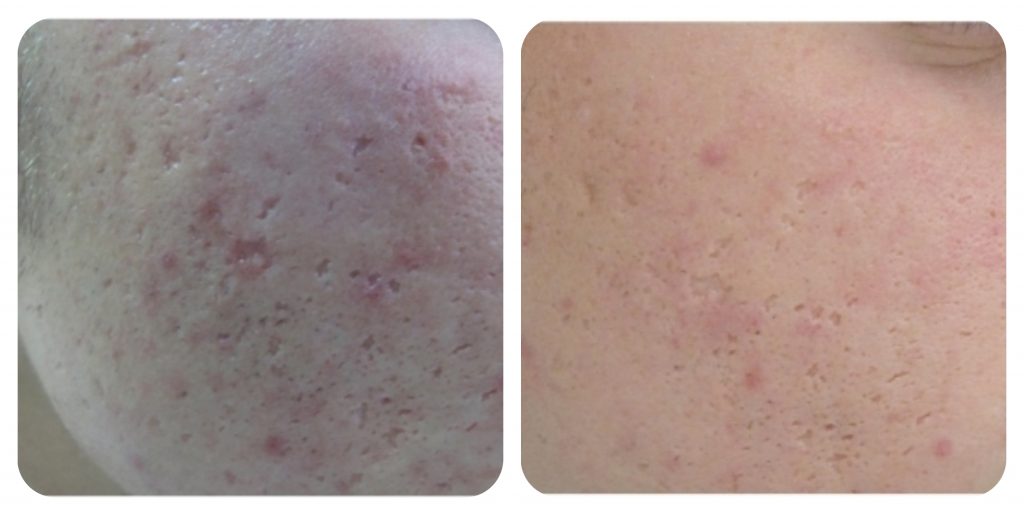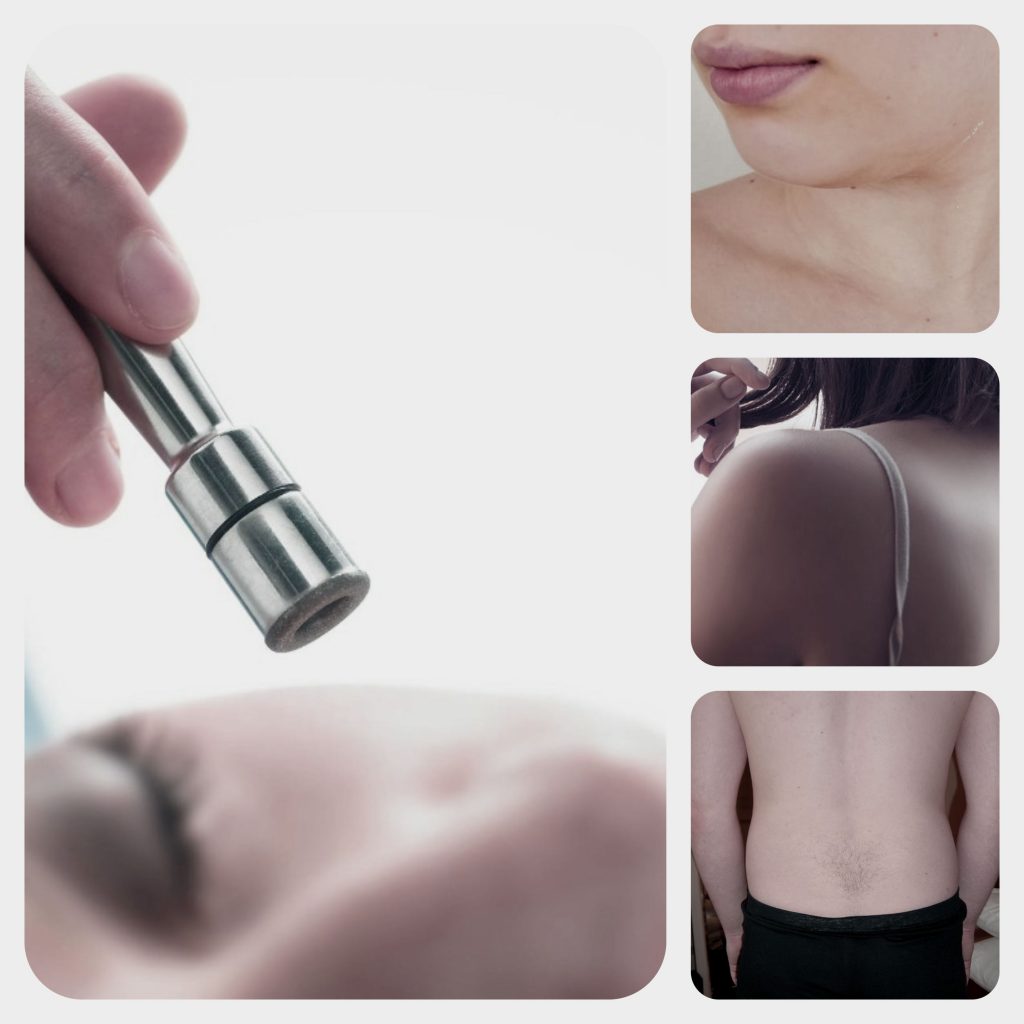Until recentlys, eliminating the unpleasant signs of acne, traumas, burns and facial scars as well as the wrinkles that are becoming more and deeper with age was considered a mission impossible.
Progress in the cosmetic industry and aesthetic cosmetology are the leading factors for the development of efficient options for the management of various facial conditions. Dermabrasion and microdermabrasion are among the most popular procedures, aiming to improve skin health and overall appearance.
We have carefully analyzed and compared the most important aspects about dermabrasion and microdermabrasion in order to help you choose the most appropriate option for your skin issue.
Purpose
Both procedures consist in removing the surface skin layers. After both procedures, as well as after the recovery periods, the skin appears healthier, younger, with fewer imperfections and bumps.
The controlled removal of the upper layers of the skin aims to trigger the regeneration processes by replacing the damaged skin with a new layer without causing permanent skin damage.
What is the difference between dermabrasion and microdermabrasion?
The dermabrasion procedure is performed by a beautician (qualified to perform the procedure) or by a dermatologist.
The treatment method should not be confused with microdermabrasion. Microdermabrasion is an innovative technique showing admirable results, with minimal risk of skin damage and the development of side and unwanted effects, which can be performed by a cosmetician, a dermatologist or the owner of a microdermabrasion machine.
Microdermabrasion is a non-invasive procedure, usually painless, with a much shorter healing and recovery period, but (when performed in-office) much more expensive.
Still, many people rely on dermabrasion technique because of the lower cost and time-proven results of the procedure.

Dermabrasion can be performed separately or in combination with other procedures to achieve better results (such as chemical peeling or facelifting).
While dermabrasion is performed on a small skin area (problem area), microdermabrasion is suitable for the entire face, neck, shoulders, chest, and back. If the area for correction is larger, dermabrasion can be performed in several stages, while microdermabrasion can be done at once.

The duration of the single session (dermabrasion or microdermabrasion) is 30 to 60 minutes. Dermabrasion can only be administrated at a dermatologist’s office, depending on the condition of the patient.
For dermabrasion, it takes an average of 7 to 30 days for the complete skin regeneration (reepithelization), so people should not be exposed to direct sunlight during this entire recovery period. The recovery period following a microdermabrasion session is usually 1-2 days.
To perform the dermabrasion procedure, the specialist uses a diamond particle ‘sander’ or a coarse brush with a rotating tip to remove the superficial dermal layers.
The tip speed of the nozzle, the type of brush and the intensity of the pressure exerted by the beautician are decisive for the depth of penetration in the presence of severe burns, deep scars or wrinkles.
This procedure is conducted under local anesthesia or complete anesthesia, depending on the size of the treated area and the general health status of the patient.
Smaller skin areas are injected with lidocaine (local anesthetic) and ice can be placed on the problem area for about 20 minutes. Some of the techniques of cryotherapy (cold therapy) can be also used, such as a cryogenic spray that causes hardening of the skin, which facilitates the procedure when it comes to the deeper lesions.
Microdermabrasion uses diamond or crystal tips for gentle skin exfoliation.
Consult your licensed skin practitioner for the most appropriate procedure for your particular skin issue. Not everyone obtains the desired results after a dermabrasion because the procedure is not appropriate for the most skin issues. The abrasion is really intense and the side effects may take a long time to completely heal. On the other hand, microdermabrasion is the least aggressive deep exfoliation technique, and is not related to adverse side effects.
There is a wide variety of therapy techniques, so the careful consideration of the benefit-risk ratio of a particular procedure is indeed important.
Pros and Cons
Microdermabrasion Pros
- Microdermabrasion is safe and effective for all skin types (including sensitive skin)
- Provides a deep exfoliating effect, eliminating all contaminants
- The effect can be seen immediately after the initial session
- Shrinks pores
- Helps even out skin tone
- Effective for mild acne management
- Can be easily performed at home
- A painless procedure with minor to no side effects
Dermabrasion pros
- Effective for the removal of deep acne scars
- Severe scarring, following a trauma or a surgery can be successfully eliminated
- Suitable for the removal of skin growths like keratoses or cysts
- Evens out skin complexion
- Successfully diminishes fine lines and wrinkles
- The treated skin is numbed during the procedure
Microdermabrasion cons
- The procedure won’t provide a beneficial effect on deep scarring or wrinkles
- Microdermabrasion should be performed regularly, as this is a non-invasive and non-abrasive method
Dermabrasion cons
- Multiple side effects, which can severely damage the skin
- Scarring is often available, following a dermabrasion procedure
- The recovery period is longer, compared to most in-office procedures
- Increased skin sensitivity is usually observed, the skin shouldn’t be exposed to direct sunlight for at least 30 days after the procedure
Benefits
Both procedures offer multiple benefits for the skin. You can see detailed information about the most important positive effects microdermabrasion provides on this link.
The effect of dermabrasion procedures is long-lasting. Some of the conditions dermabrasion treats are the following:
- Acne scars: severe forms of acne in the absence of therapy (in some cases after treatment) lead to the formation of scarring (scars) that look like unevenness on the surface of the skin
- Removal of superficial scars resulting from trauma or serious intervention
- Rhinophyma: a chronic condition where red enlargement and reddening of the nose, usually resulting from untreated or improperly treated rosacea is available
- The presence of small cysts or epidermal nodules
- The removal of potentially precancerous conditions, such as actinic keratosis
- Tattoo removal: rarely used as laser therapy achieves better results
- Various conditions that lead to a change in skin pigmentation, such as freckles, melasma (chemical or laser peels are more commonly used because they are less aggressive and the recovery period is shorter)
- Fine lines and wrinkles in the area around the mouth (also known as mimic wrinkles)
The removal of scars, imperfections, and tattoos is permanent, while damage resulting from sunlight and aging processes can reoccur over a certain period of time.
Globally, the dermabrasion technology has been replaced by innovative methods, with lower invasiveness, easier to conduct and providing the same results with less pain and a shorter recovery period, such as different types of chemical peels, laser procedures, microdermabrasion, and others.
An extremely important part of the dermabrasion procedure is the complete and detailed cosmetic history and thorough examination of the user.
12 to 18 months prior to the procedure, it is necessary to avoid products containing aromatic retinoids (eg isotretinoin), as these may slow down the healing process and increase the risk of scar development.
Sunburns, active (infected) acne, family history of keloid scarring, as well as a recent or untreated herpes infection are just some of the contraindications to the procedure. These conditions increase the risk of developing a secondary infection after the procedure, scar formations, and slow recovery.
Some users are advised to stop smoking, avoid direct sunlight, stop taking certain medications that affect their blood coagulation and thrombosis (such include aspirin and warfarin).
The intake of immunosuppressive products should also be discontinued as they slow down the regeneration of epidermal cells and increase the risk of post-operative infection.
Before the procedure is performed, all available allergies (to products, food products, environmental factors) should be investigated, as well as the reporting of all products and supplements, whether prescribed by a licensed skin practitioner or self-administered OTH products, is required.
Post-procedure care
Microdermabrasion post-procedure care includes daily moisturizing and wearing sun protection (especially during the first days after your procedure, as the skin becomes more vulnerable to external irritants). SPF 30+ is highly recommended because the skin becomes more fragile and ultraviolet radiation may cause damage to the healthy cells.
After the dermabrasion intervention, the user may experience the following adverse effects[1]:
- Redness and swelling: available in all patients, following dermabrasion treatment. The swelling in some users disappears within a week but may persist for several months
- The appearance of certain rashes presented in small white bubbles that usually disappear within a month
- Enlargement of the pores: the pores return to their normal size after the swelling is gone
- Changes in skin color: The procedure may change the color of the skin to darker (hyperpigmentation) or lighter (hypopigmentation), these changes may be temporary or permanent
- Infection: In a small percentage of users, a bacterial, viral or fungal infection develops after the procedure
- Scars: removal of deep lesions is likely to form scarring after the dermabrasion. The formation of keloids or hypertrophic scars requires additional topical corticosteroid therapy
- Allergic manifestations, such as itching, burning, tingling sensation
Better results and a lower risk of developing side effects are observed in users with lighter skin. The darker skin type, as well as the process of aging, are factors that greatly increase the risk of not obtaining the expected results of the intervention. Sun protective creams or lotion should be regularly applied (every 2 hours) in order to avoid ultraviolet damage.
Before performing dermabrasion or microdermabrasion, you need to be informed about the expected results, the methods of performing the procedure itself, the risk of adverse effects. The informed choice, regarding the dermatological procedures, creates realistic expectations in patients.
Price Comparison
When performed in-office, a single microdermabrasion session costs $100-$300. The procedures should be done once or twice a month, depending on the condition of the skin and your personal preferences. You also have the alternative to buying your own microdermabrasion device (the price varies between $70 and $300) which you can use unlimited times. Most of these devices are also portable, providing the same benefits as a professional session would.
The price of a dermabrasion procedure[2] varies, depending on where it is performed, from $50 to $1500. The difference is that a single session can provide long-lasting results. Often, additional procedures are not needed.
Conclusion: which is better – Dermabrasion or Microdermabrasion?
Having that microdermabrasion is the modern, less aggressive, non-abrasive and non-invasive version of dermabrasion, we consider it the better option for your skin. Dermabrasion is used for very severe, deep skin issues, which cannot be treated by removing the outermost skin layer. Note that the adverse effects as well as recovery period post dermabrasion session are more serious and may permanently damage the skin.
References
- Dermabrasion in cosmetology.
https://www.ncbi.nlm.nih.gov/pubmed/12814336


